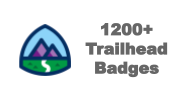Mastering Salesforce APIs
INTRODUCING
Mastering Salesforce APIs
Learn How to Use Salesforce APIs. No Development Skills Required!
Introducing “Mastering Salesforce APIs” – A Training course for all Salesforce Professionals to understand and master working with Salesforce APIs. This course has been designed in a way that you DO NOT need to have any development background or skills to work with Salesforce APIs.
Learn how to query, create, update, delete data & metadata in Salesforce using REST, Composite, SOAP & Metadata APIs. Compress your days and weeks of learning in hours and minutes.


Why APIs?
In today’s world, applications cannot work in isolation. As per a study conducted by MuleSoft, the average organization uses more than 1,000+ individual applications across their business (yes, you heard that right). They need to talk to each other to provide a better user experience and reduce swivel-chairing between applications.
If you haven’t already, there is a high chance that at some point in time, you will work on a Salesforce project that involves integration.
And when that time comes, rather than sitting on the sidelines and watching others discuss all the technical jargons and nuances of how to integrate other applications with Salesforce, you will be able to actively participate and make valuable contributions.
This lean and mean course compresses days and weeks of learning in just a few hours and tells you only what you need to know, cutting away all the unnecessary fat.
Course Curriculum
- What is an API?
- Why Do We Need APIs?
- Three Important API Concepts
- What APIs Do Salesforce Provide?
- Sign Up For Developer Org
- Edit/Validate My Domain
- Get Your Security Token
- Create Connected App In Salesforce
- Install Postman On Your Computer
- Basics Of Postman
- Anatomy of REST API
- Six Guiding Principles of REST API
- Connecting To Salesforce From Postman
- Query Records in Salesforce using REST API
- Create Record in Salesforce using REST API
- Update Record in Salesforce using REST API
- Delete Record in Salesforce using REST API
- Other REST API Calls
- Define Environment & Variables
- Use Variables to Get Access Token
- Populate Variable Values from Response Body
- Change All API Calls to Use Variables
- Overview of Composite REST APIs in Salesforce
- Using Composite REST API
- Using Composite Graph REST API
- Using Composite Batch REST API
- Using SObject Tree REST API
- Using SObject Collection REST API
- Using Composite Graph REST API
- Comparison of Different Composite Resources
- Anatomy of SOAP API
- Downloading & Using WSDL
- Query Records in Salesforce using SOAP API
- Create Record in Salesforce using SOAP API
- Update Record in Salesforce using SOAP API
- Upsert Record in Salesforce using SOAP API
- Delete Record in Salesforce using SOAP API
- Other SOAP API Calls
- Introduction to Metadata API
- Downloading & Importing Metadata WSDL
- List All Metadata Available in the Salesforce Org
- Create Metadata using Metadata API
- Update Metadata using Metadata API
- Upsert Metadata using Metadata API
- Rename Metadata using Metadata API
- Delete Metadata using Metadata API
- Other Metadata API Calls
- Salesforce API Governor Limits
- Salesforce APIs with Postman Collection
- Dynamic Variables in Postman
- Using Test Scripts in Postman
- Running Collections in Postman
- Additional Information with Response in Postman
- Formatting Output using HTML & CSS in Postman
- Generating Client Code in Postman
- Collaboration in Postman
How It Will Benefit You?
- Add One of the Most Important Concepts of Salesforce To Your Arsenal - Integration & APIs
- Step Up Your Salesforce Skills, Stand Out from Others, Advance Your Career
- Have a Solid Understanding of How Salesforce APIs Work, Irrespective of Whether You Are a Developer Or Not
- Be Able to Make & Test API Calls Yourself, Without Writing a Single Line of Code
- Participate in Integration Related Discussions and Add Value
- Avoid Being an Imposter

Mastering Salesforce APIs is included in the "All Access" Pass on Our Academy!
With “All Access” pass on ASAGARWAL.COM Academy, you now have access to our entire library of courses and guides. To find out more about this pass, please click here.
Want to Watch a Free Preview?
Click on the following button, sign up (free) and login to watch the to the free preview of this course “Mastering Salesforce APIs”
Our Approach
In this course, we will take Crawl -> Walk -> Run -> Fly approach to learn APIs.
We are going to start from scratch and understand the concept of APIs, why do we need it and what are the different APIs that Salesforce provides.
Then we will take a look at the four most important types of APIs that Salesforce provides. Understand the nuances of each of these APIs and how to use them. This will include a demo of how to call Salesforce APIs to query, create, update & delete data and metadata and then you will be required to try these out yourself as the lab exercise. For this, we have provided exhaustive step-by-step PDF guides with screenshots to accelerate your learning.

A Training Approach Designed for Your Success!
While Mastering Salesforce APIs equips you with knowledge, hands-on practice, inspiration, and unparalleled support to become an API Rockstar, our unique training approach ensures it’s more than just a course where you passively watch videos in isolation.
Our courses are community powered courses that foster engagement and collaboration. Join forces with fellow learners to tap into collective knowledge, share insights, and tackle challenges alongside like-minded Salesforce enthusiasts on the same journey.
But that’s just the beginning. Explore our comprehensive training approach, meticulously crafted for your success!
Introducing "All Access" Pass
With “All Access” pass on ASAGARWAL.COM Academy, you now have access to our entire library of courses and guides. To find out more about this pass please click here.
Click on the following button, sign up (free) and login to watch the to the free preview of this course “Mastering Salesforce APIs”
Get All Access pass to access the training course “Mastering Salesforce APIs” and our entire library of guides and courses.
Frequently Asked Questions
- Individuals – Salesforce Administrators, Consultants, Developers or Architects who would like to understand & master the concepts of Salesforce APIs.
- Organizations – Salesforce customers, system integrators (SI), implementation partners and ISVs looking to upskill their team on Salesforce APIs.
- This course is not intended for Salesforce end-users
- This course will also not be suitable for absolute beginners in Salesforce
- Though you are not required to write any code or have any development background, the content of this course will be fairly technical. If you are not comfortable with getting technical, this course may not be for you.
- The best way to get most out of this course will be do all the lab exercises. If you are not willing to commit to complete these lab exercises, you should probably not be joining this course.
- Salesforce Certified Administrator and/or
- Salesforce Certified App Builder and/or
- Salesforce Certified Platform Developer I
- Well conversant with the concept of standard/custom objects & fields, API Names
- Conceptual understanding of the different metadata types available in Salesforce like Custom Objects, Custom Fields, Custom Metadata, Custom Settings, etc.
The main objective of this course is to learn how to work with Salesforce APIs. And we will be doing that through one the most popular API Clients called Postman. Please note that we will NOT be covering how to make API calls using any other programming language like Java, Python, Ruby etc.
Hi, I am Ashish Agarwal having 34 Salesforce certifications and 1200+ trailhead badges. I have more than 25 years of experience in Information Technology out of which 12 years have been spent in Salesforce. I started with Salesforce as an admin and then moved on to become a consultant, solution architect, technical architect, and program architect. I have also worked with Salesforce in Singapore for 4+ years and have been an advisor architect to multiple large-scale implementations.
Taking a complex topic, breaking it down and simplifying it for others to understand and use is one of the areas I am passionate about. And this blog is a live example of that with hundreds of step-by-step guides, how-tos, tips & tricks.
Have you ever felt like an imposter, sitting in a meeting and participating in discussions on a topic that you were not familiar with? I have.
In 2014 I moved to London for two years to join a Salesforce Consulting Company. I was staffed on a fairly complex project as a Technical Architect. The client wanted to implement Salesforce for their business operations, and this required integration with various backend systems. Sure enough, there were frequent meetings and discussions on integration related topics.
Now, at a macro level I understood the concept of integration & APIs, what do they do and why they are required. But at a Micro level, I did not know & understand how exactly it worked. How do you make API calls, how do you query, insert, update, delete records in Salesforce through APIs. Client’s integration team was not familiar with Salesforce and being a technical architect on the project, the onus was on me to guide them through. But because of my limited knowledge of Salesforce APIs, I often found myself feeling unconfident & uncomfortable, pretending to be understanding things that were talked about and avoiding asking questions. In other words, I was being an imposter.
At one stage, it became so frustrating that I decided to do something about it. So, for next 3-4 weeks, I spent a lot of time and energy in figuring out the basics of how exactly APIs works in Salesforce. How do you connect to Salesforce, how do you make API calls to query, create, update, and delete records? And it wasn’t an easy journey. I had to struggle to figure out even the most basic things.
Long story short, once I figured out how Salesforce APIs work, the restrictions & limitations, those meetings started becoming easier to handle and even enjoyable. I particularly remember one troubleshooting discussion where the integration team reported that they were not able to retrieve more than a certain number of records from Salesforce through an API call and I advised them that Salesforce will return a maximum of 2000 records in one call. If there are more than 2000 records based on the query conditions, the response will contain an indicator and a link to retrieve the next batch of records. It was liberating.
Got More Questions?
Still got questions that have not been answered? For any further assistance, information, or clarification, please fill in the contact form here or email us at contact@asagarwal.com.
On-Demand Live Online / Onsite Training for Corporates
Looking to train your team on Salesforce Flows? Submit this Live Training Inquiry form and we will get back to you within 24 hours.
MY / BLOG CREDENTIALS:







